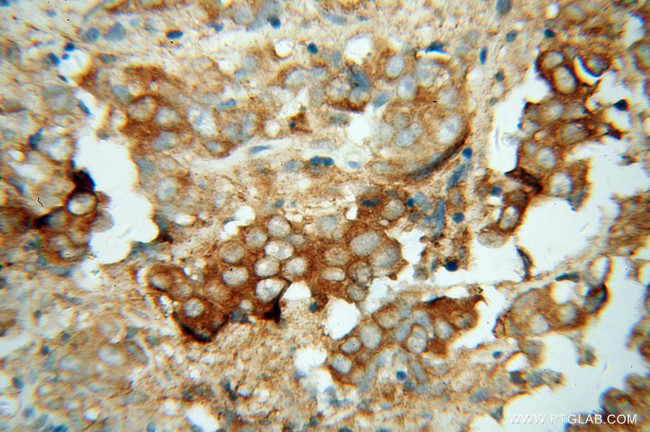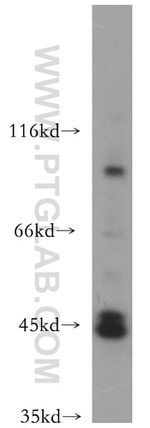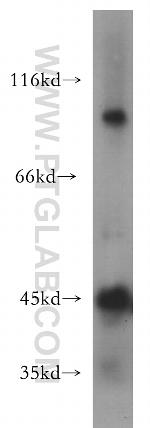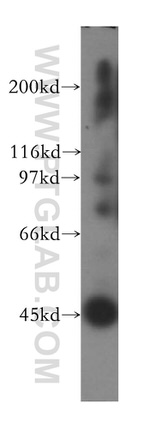Search Thermo Fisher Scientific
产品信息
13537-1-AP
种属反应
已发表种属
宿主/亚型
分类
类型
抗原
偶联物
形式
浓度
纯化类型
保存液
内含物
保存条件
运输条件
产品详细信息
Immunogen sequence: MATRNSPMP LGTAQGDPGE AGTRPGPDAS LRDTGAATQL KMKPRKVHKI KAVIIDLGSQ YCKCGYAGEP RPTYFISSTV GKRCPEAADA GDTRKWTLVG HELLNTEAPL KLVNPLKHGI VVDWDCVQDI WEYIFRTAMK ILPEEHAVLV SDPPLSPSSN REKYAELMFE TFGIPAMHVT SQSLLSIYSY GKTSGLVVES GHGVSHVVPI SEGDVLPGLT SRADYAGGDL TNYLMQLLNE AGHAFTDDHL HIIEHIKKKC CYAAFLPEEE LGLVPEELRV DYELPDGKLI TIGQERFRCS EMLFQPSLAG STQPGLPELT AACLGRCQDT GFKEEMAANV LLCGGCTMLD GFPERFQREL SLLCPGDSPA VAAAPERKTS VWTGGSILAS LQAFQQLWVS KEEFEERGSV AIYSKC (1-415 aa encoded by B C033789)
靶标信息
The protein encoded by this gene is a member of a family of actin-related proteins which share significant amino acid sequence identity to conventional actins. Both actins and ARPs have an actin fold, which is an ATP-binding cleft, as a common feature. The ARPs are involved in diverse cellular processes, including vesicular transport, spindle orientation, nuclear migration and chromatin remodeling. This gene, and related gene, ACTL7A, are intronless, and are located approximately 4 kb apart in a head-to-head orientation within the familial dysautonomia candidate region on 9q31. Based on mutational analysis of the ACTL7B gene in patients with this disorder, it was concluded that it is unlikely to be involved in the pathogenesis of dysautonomia. Unlike ACTL7A, the ACTL7B gene is expressed predominantly in the testis, however, its exact function is not known.
仅用于科研。不用于诊断过程。未经明确授权不得转售。
生物信息学
蛋白别名: actin-like 7-beta; actin-like 7B; Actin-like protein 7B; Actin-like-7-beta; MGC151192; MGC151194; RP11-3J11.2; t-actin 1; T-actin-1; testis tissue sperm-binding protein Li 43a; Testis-specific actin-1
基因别名: ACTL7B; Tact1
UniProt ID: (Human) Q9Y614, (Mouse) Q9QY83, (Rat) Q4QR76
Entrez Gene ID: (Human) 10880, (Mouse) 11471, (Rat) 313183








